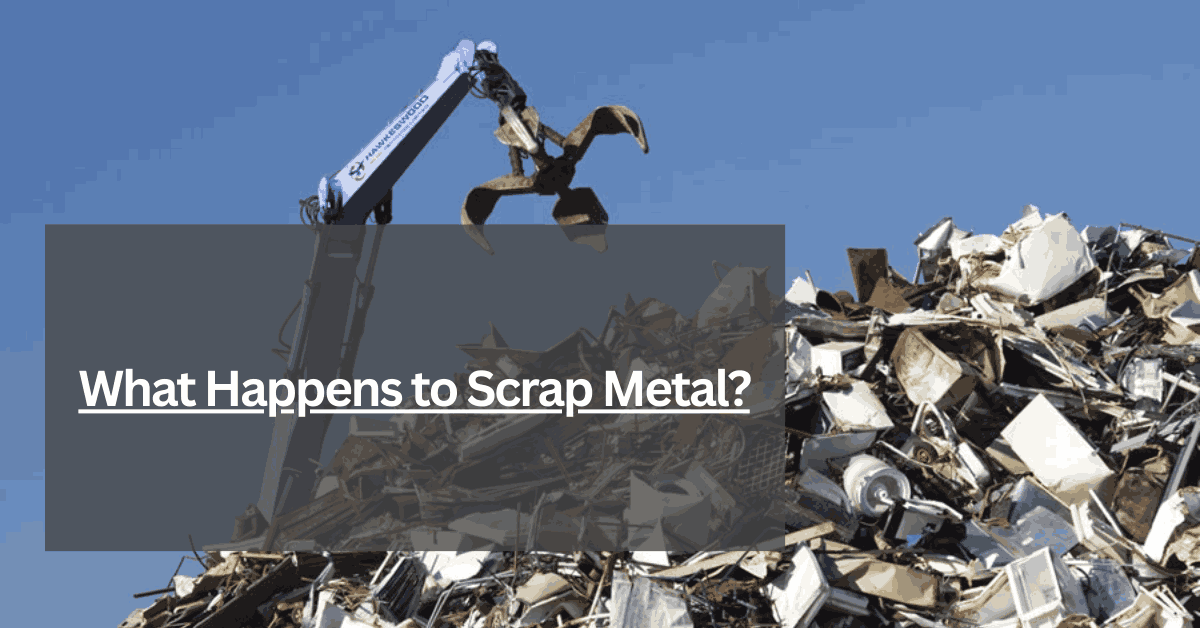Metal recyclers can use scrap metal to make new products such as cars, appliances, and construction materials. Scrap metal is recycled to reduce the need to extract and process new raw materials, which may help conserve natural resources and reduce energy consumption.
Reputable metal dealers use various methods such as sorting, shredding, and melting to repurpose old metal into new and valuable products. Here are the types of recyclable metal materials and what happens to them at a scrap yard:
Table of Contents
Ferrous Metals
Ferrous metals are magnetic and contain iron. They include steel, cast iron, and wrought iron. These metals make many products, from cars and appliances to bridges and buildings.
Industrial containers and packaging materials are also often made from ferrous metals. Due to their strength and durability, these metals may be recycled multiple times without losing their properties.
Non-ferrous Metals
Non-ferrous metals do not contain iron and are not magnetic. They include aluminum, copper, brass, lead, and zinc.
These metals are commonly used in electrical wiring, pipes, roofing materials, and kitchenware. Non-ferrous metals typically have a high value and can be recycled and repurposed several times.
The Scrap Metal Recycling Process
Several steps are involved in the metal recycling process, from collection and separation to the production of recycled metal products. Here are six of the stages metal recyclers use:
1. Collecting
The process begins with collecting metal from various sources like discarded appliances, construction debris, and obsolete machinery.
This stage requires proper identification and gathering of recyclable metals from their respective sources.
Metal recyclers then use a weigh-in station to determine the weight of collected recyclable metal materials. Curbside and public recycling programs may also collect metal from households and businesses.
2. Sorting
Sorting involves separating different types of metals based on their properties, characteristics, and recycling requirements. Standard methods for sorting scrap metal include magnets, sensors, and manual labor.
Metals like iron and steel are magnetic and can be easily separated from non-magnetic metals using large magnets. Sensors detect specific metal types, enabling efficient sorting and separation.
Scrap yards can apply manual labor for sorting metal, with workers trained to identify different metals by their unique features. Metals with high purity are typically more valuable and may be recycled or repurposed at a higher rate.
Sorting also helps prevent contamination, as certain types of metals cannot be mixed due to chemical reactions.
3. Preparing Into Forms
Recyclers often cut the metal to specific sizes and shapes, making it easier to handle and transport. Shredding, torching, and baling are some of the most commonly used methods of preparing recyclable metal materials for further processing.
This step may also help increase the metal’s value by reducing the amount of labor required for further processing.
4. Melting and Refining
The process of melting down scrap iron varies depending on the type of metal and its intended use. Ferrous metals like iron and steel can be melted down using electric arc furnaces.
Non-ferrous metals such as aluminum and copper require specialized equipment like induction furnaces. To minimize impurities, the scrap metal is then put through refining processes. Refining involves treating the molten metal with various chemicals to remove contaminants.
5. Solidifying
The solidification process transforms the molten metal into usable products that can be sold and utilized in various industries. There are several methods of solidifying molten metal, including casting and rolling.
Casting involves pouring the molten metal into molds to create desired shapes. Rolling uses a press to flatten the metal into thin sheets or wires. The solidified forms of recyclable metal can then be used to manufacture various products like appliances and construction materials.
6. Manufacturing and Reuse
Manufacturers use scrap iron as a raw material in various processes, such as stamping and welding, to create new products.
Reusing recyclable metal materials reduces the need to extract new resources from the earth, making it a more sustainable option for manufacturing. Recycling metal may also reduce the amount of waste sent to landfills, contributing positively to the environment.
Partner With a Professional Scrap Metal Dealer
Recyclable metal materials go through various stages to be transformed into usable materials. Through sorting, melting, and solidifying, recyclable scrap metal can be reused in manufacturing to reduce the need for new resources. Visit a scrap metal dealer to help you properly sort and dispose of your recyclable metal materials.
- Are Private Keys Important in Crypto Wallets?
- Get a Free Consultation Today! Polonez America Helps You Plan Your Perfect Shipment
- Ad Exchange Platforms: The Backbone of Modern Digital Advertising
- The Power of Quiz Marketing: How to Engage, Convert, and Delight Your Audience
- att my results
